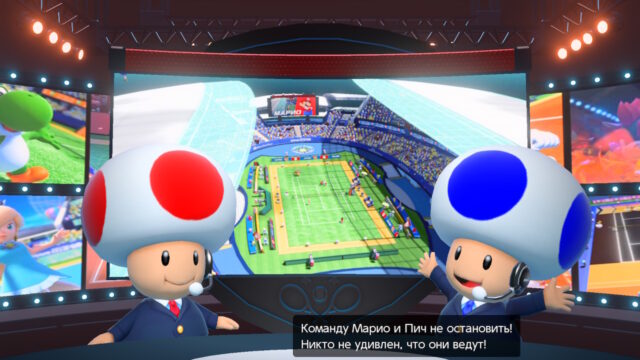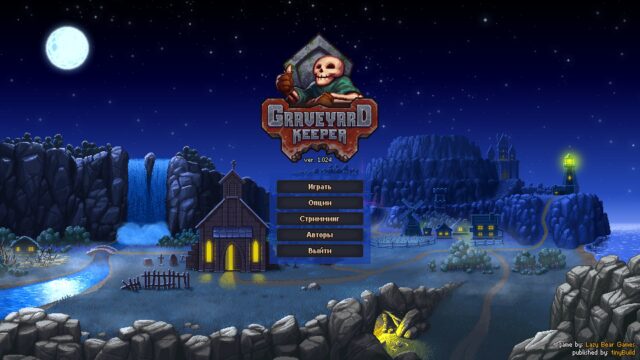DmC: Devil May Cry Review
There are extreme extremes, and there is DmC. The Devil May Cry reboot is capable of making you stare at the screen with your mouth open in astonishment, gripping the controller until it squeaks, and it can also bore you and disappoint you at times. When DmC picks up speed, it is simply stunning, but when the action slows down, it barely reaches average. It’s a game that constantly swings from one side to the other, a 10 out of 10.
The new image of Dante is a mixture of uncompromisingness, deadly beauty, and arrogance expressed in every motionless pose. And he becomes even more irresistible when he starts moving, transforming into an unstoppable bundle of energy. Every arc that Dante’s blade traces in the air is soaked in his pompous self-confidence – to the point that sometimes he even loses his balance slightly. But only for a moment. The animation in the game is magnificent, and Dante never tires of demonstrating it. Hundreds of his various movements smoothly connect in the most incredible sequences. Add to that his proud posture and audacious speech – and there are few examples of classic characters so successfully “reborn.”
The combat system, which many were worried about, turned out to be DmC’s main trump card. The fact that Ninja Theory was involved in the development implied that the battles would be spectacular and dynamic, but what really impressed me was Dante’s repertoire of moves and their usefulness in combat.
Straight from Devil May Cry 4, chains have migrated into the game, which can be used both to attract enemies and to pull them towards you, providing incredible maneuverability in battles. These actions are soon carried out almost on autopilot, allowing you to quickly deal with enemies. You can throw yourself into a crowd of demons and spin like a whirlwind, slicing them with your scythe, dealing more and more damage with each strike – or knock persistent flying creatures to the ground and turn them into mincemeat before they take off again.
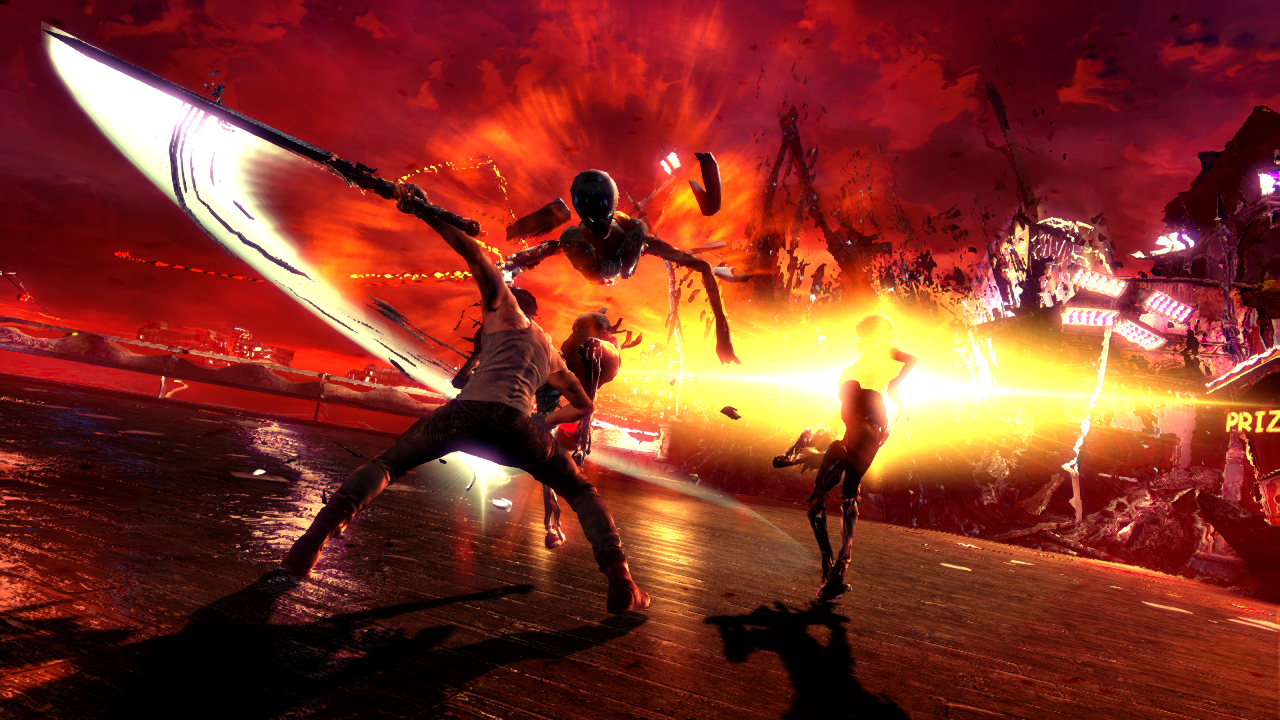
At the introductory level, there are more interesting environmental elements than in any other – for example, an attraction like “Orbita” that crushes monsters thrown at it. The achievement name you receive for 10 such kills will bring a satisfied smile to any fan.
The combat unfolds in all its glory gradually as Dante unlocks new weapons. You will receive the full arsenal by completing about two-thirds of the game, but it will take several playthroughs for its complete upgrade. The weapons can be of angelic (blue) and demonic (red) types and are activated with the right and left triggers, respectively.
The angelic weapons include a scythe and a pair of massive shurikens – both are used to attack multiple enemies at once. The scythe spins wildly around Dante like a propeller, while the shurikens gather enemies together and shred them to pieces. On the other hand, the demonic weapons are designed to deal massive damage to a single target: a massive axe that pierces armor and impressive fiery fists that can be charged for powerful strikes (they are particularly useful against large enemies – not to mention the good old “dragon punch”).
Dante’s classic sword, Rebellion, is something in between these two types. It is an incredibly useful weapon that will never cease to surprise us with something new. It’s worth mentioning how Dante handles it – sometimes he underestimates his own strength and gets carried away with the sword. The angelic and demonic toys attached to the triggers, along with Rebellion, provide instant access to three different types of weapons, not counting the pistols. Later on, there will be more than three of them, and to try out a different playstyle, you will have to switch between them using the arrows, which won’t be as fast, but still, any weapon will be available without the need to pause the game.
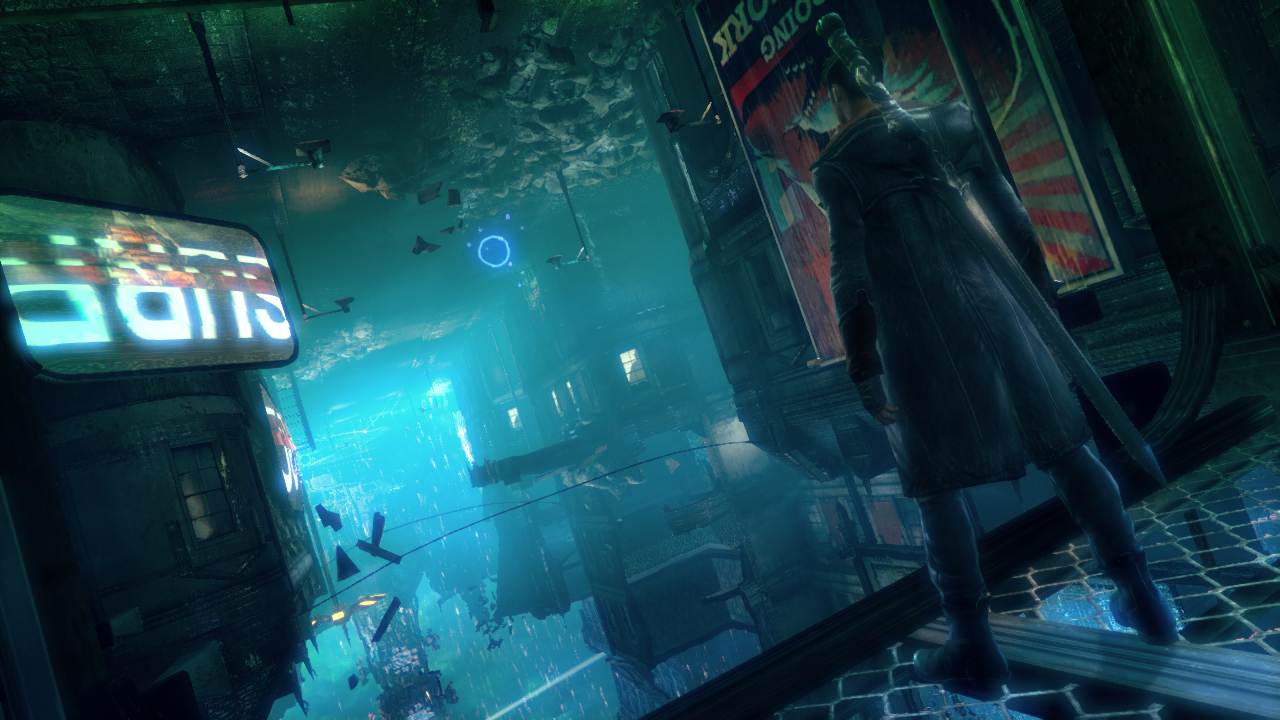
Sections with jumps and other acrobatics are always visually pleasing, short video inserts and camera flyovers showcase our hero in all his heroism – but all this does not help to hide the fact that the action here slows down significantly.
Given the variety of possibilities, this is a significant achievement, crucial for the continuity of DmC gameplay. Everything revolves around the Rebel, which can be used in almost any situation – groups of enemies are cut down with wide swings, and single enemies are destroyed with almost endless combos. But what is truly exciting is switching weapons in the middle of combat, dramatically changing the pace of the fight. The Angelic type allows for crushing demons with rapid attacks, and if desired, engaging in aerial combat without touching the ground. With demonic weapons, on the other hand, everything slows down for deadly pinpoint strikes.
The army of demons opposing Dante is a whimsical collection, clearly drawing inspiration from the mechanical mannequins of the original, but with futuristic touches like folding blades, shimmering torsos, and mesmerizing buzz of chainsaws. Some may complain about the predictability of their attacks, which they noticeably intensify and start glowing before, but personally, I got hit quite often.
However, what is truly disappointing is the color-coded system. After a certain amount of time in the game, blue and red demons appear, which can only be killed with weapons of the corresponding color. If Dante hits them with something else, they simply bounce off, leaving themselves open for counterattacks. It is unclear why such a varied combat system was created only to force players to act in a strictly defined manner. This scripted nature is also evident in battles with larger “regular” enemies, who have obvious weak points, and fighting them requires using almost the same strategy every time. It’s not to say that there are no challenges, but each new battle always reminds me of the previous one.
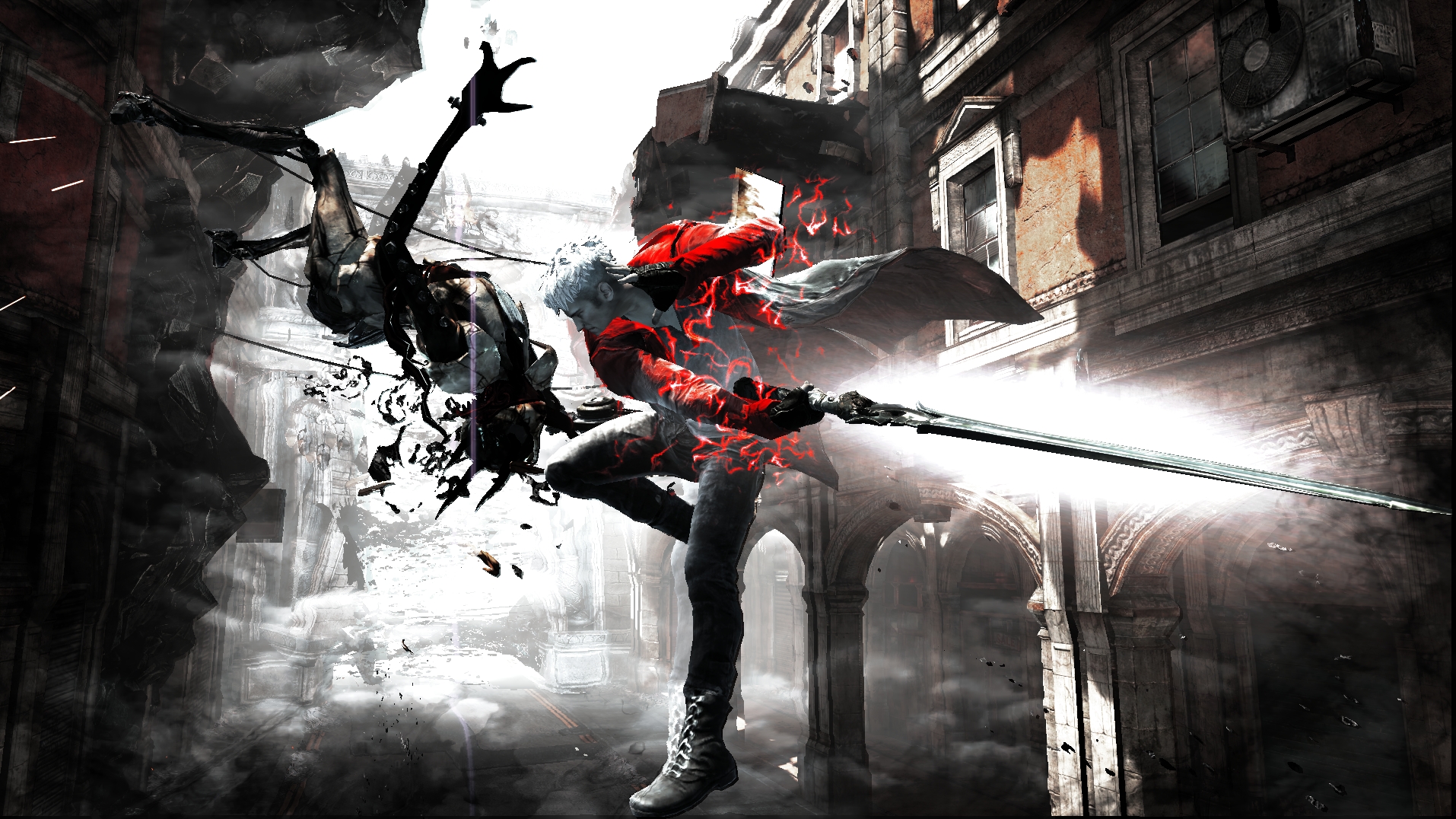
The Devil Trigger mode is the finishing touch to Dante’s diverse combat abilities – it allows him to launch enemies into the air, where he can have fun with them and earn mega-bonuses. However, it also has a more practical application – health regeneration.
The visual design of the levels demonstrates a creative scope that few games can boast – the works of Maurits Escher are mixed with Green Soylent and passed through Bayonetta. Everything is so beautiful and extraordinary that during the breaks between fights, you constantly spin the camera back and forth. And this is not just one example of frozen magnificence: in DmC, everything constantly shifts and distorts on the levels, and they can deform beyond recognition as you progress, and closer to the end of the game, we are greeted with a brilliant idea with blueprints. The most interesting settings are applied to platforming sections, which saves them from impossible boredom.
Games of this genre sometimes need to reset the pace, allowing the player to take a break from endless pounding. In such moments, Dante awaits leisurely running, jumping, and using chains. Not that it’s so bad, not at all – just not very interesting. No matter how many ways Dante can move in space – he is still not Mario, and unlike battles, controlling him in the air is not so easy – he constantly wants to fly too far or fall down after an unsuccessful jump. In the later stages, we are presented with increasingly unusual environments, for example, a section where Dante defends a flying car, throwing obstacles aside in slow motion, but even there, it all comes down to “hook here, cling there” – and it plays as interesting as it sounds.
What disappoints even more is the battles with the main villains – especially after the last part of Devil May Cry. Although there are some good visual ideas here – in particular, the leading Raptor News and the cursing succubus – the battles themselves are equally disappointing. Perhaps because of the too obvious hints at weak spots. The whole trick to defeating any boss is either to throw a chain where something is glowing red or simply hit where something is glowing red.
For Devil May Cry, this is a big minus, but there is something worse – the ending of the game. It’s a disaster – and unfortunately, I’m speaking figuratively. The tradition of the series was battles with all the previous bosses, but here they decided to abandon it in favor of another platforming run, several secondary battles, and a rudimentary puzzle. The battles with the final boss hit the reputation of the series even harder. The first one is essentially a repetition of the previous fight, with the difference that this time everything is much easier. The second battle is interrupted five times by unnecessary chatter, wasting the perfect atmosphere before the climax, which, again, does not contain any tactical intricacies. The ending of DmC turned out to be a disappointment, although it was supposed to be a platform for demonstrating Dante’s combat skills in all their magnificent variety.
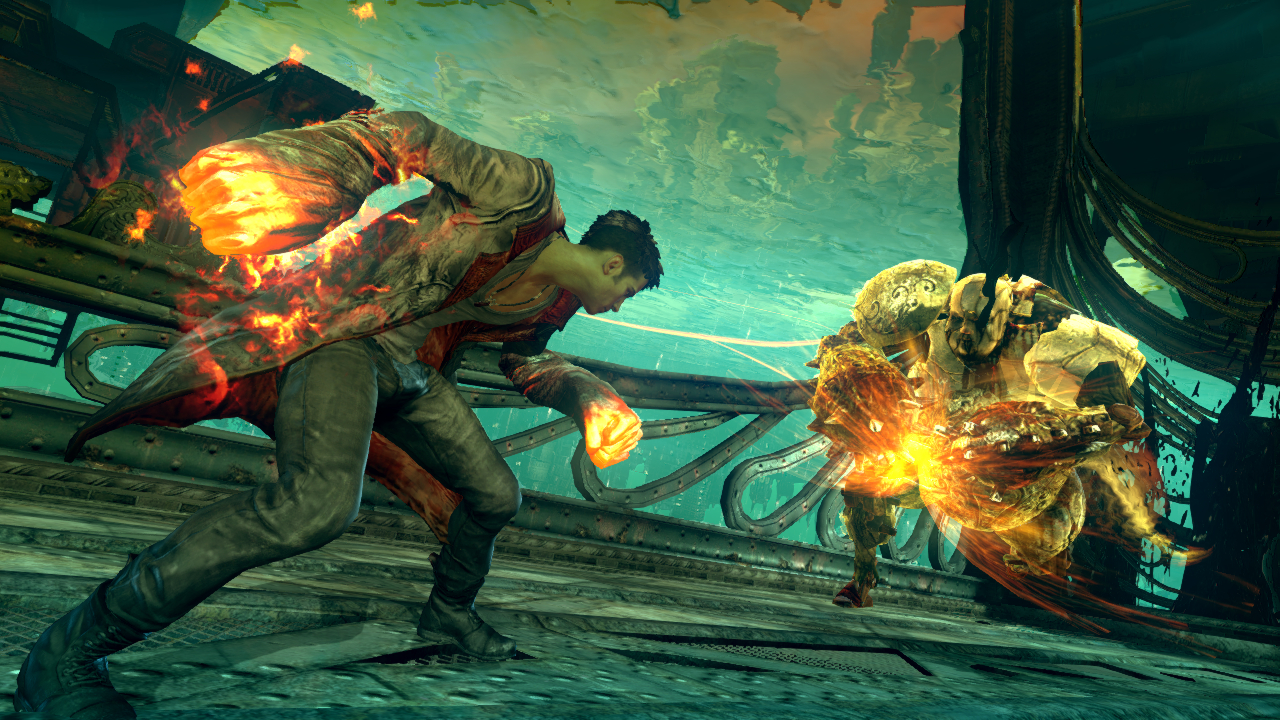
Personally, I can still nitpick that it is not possible to reassign control for individual movements. For example, simple evasion is assigned to RB and LB, but with the introduction of angelic and demonic evasion, it becomes redundant. Nevertheless, for new movements, I am forced to press the button twice each time.
Fortunately, the game still has a few aces up its sleeve. After the first playthrough, the “Son of Sparda” difficulty is unlocked, where enemies will be stronger, learn new moves, and there will be more of them. Additionally, you won’t know who you’ll have to face in each new battle. The “Nephilim” difficulty (hard) personally didn’t seem difficult to me, but here you really have to try: timing powerful group attacks, maximizing combo chains, choosing key targets wisely, and swiftly dealing with them. It is here that DmC turns the key and frees you from heavy shackles.
The next difficulty is the infamous Dante Must Die. The difference won’t be as noticeable as last time, but enemies will become more aggressive, meaning you’ll have to die more often. Their constant reshuffling provides even more incentive for replaying than just increasing the difficulty. Next, the “Heaven and Hell” mode is unlocked, where Dante and all his enemies die from a single hit – and after that, the “Hell and Hell” mode is unlocked, where only Dante dies from a single hit. I haven’t unlocked this mode, but it’s obvious that only true psychics would need it.
The battles offered at higher difficulty levels are simply grandiose. There are many demons, and they force Dante to constantly move and control their movements. Once you get into this new rhythm, he will easily cut through dense enemy ranks, only stopping for a couple of stylish evasions, parrying a few attacks (because he’s damn cool!), and ultimately ending the battle with one devastating blow. No matter what you call this feeling of constant focus that the best games of this genre give us, just as it starts to fade, DmC brings it back – and that’s not even mentioning everything else.
Ninja Theory successfully transformed the classic series, and I would even say that DmC itself almost reaches the level of a classic. Don’t dwell on the game’s shortcomings because its merits are truly great. Capcom undoubtedly chose worthy developers. Ninja Theory got the main character and the combat system right – the most important components – and it’s obvious that DmC was made with love. It pays tribute to traditions while also paving its own new path.
As for Dante, inside, beneath his appearance and manners, he hasn’t changed one bit. This guy may look different, but he still embodies hardcore.
Share
Discuss
More Reviews


